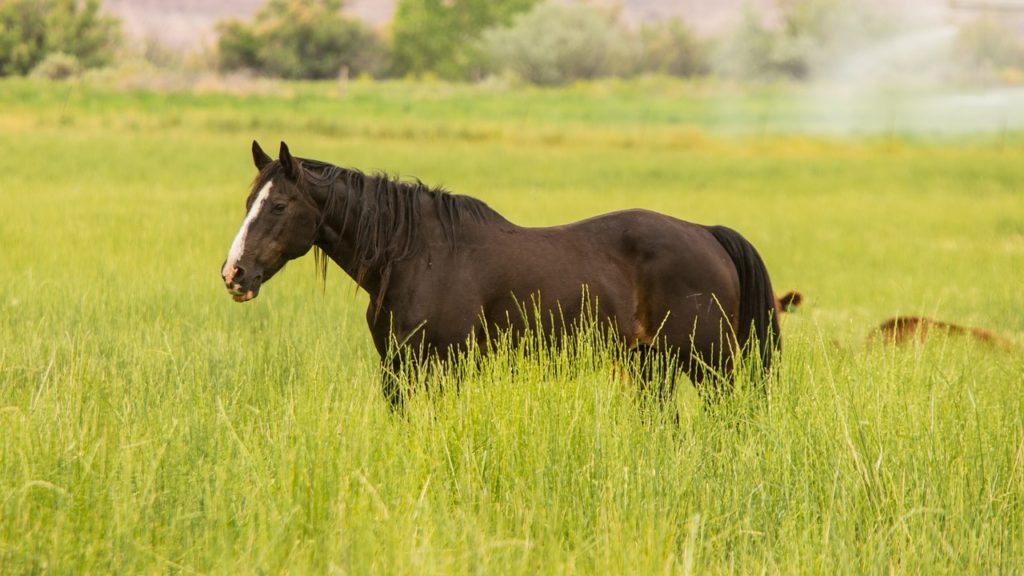Philip Larkin is a simple minded poet who dealt with ordinary objects and penetrated the heart with his psychologically powerful use of words and imagery. However, a heavy dose of pessimism is found in the poems of Philip Larkin and At Grass is no exception. The poem is from his collection of poetry – The Less Deceived – first published in the year 1955. This five stanza poem is a shuffle between life and death, past and the present.
At Grass: Summary and Analysis
Stanza I
The onlooker finds two horses at a distance merging themselves in shade and grass. One can only identify them as horses by their moving hair and tails.
A regular scene where a person notices horses wailing time in the field; but, Larkin uses the scene to express the anonymity of the horses and their insignificance at their current situation. They are regular horses holding nothing special about them until their true identity is revealed in the following stanza.

Stanza II
The same horses were famous fifteen years ago where they raced to become legendary. People knew about them as their names were everywhere and race enthusiasts followed them.
The onlooker knows something most people do not know – the past of the horses at grass. Larkin demonstrates the infidelity of life by contrasting the past glory of the horses, cheered by everyone, to the present where they are left alone.
Stanza III
The horses enjoyed their fame, witnessed the glory of their jockeys, cheering of the crowd, people nervous about their horses winning or losing, etc. in the race course.
The silk worn by the jockeys symbolize joyous times of the past. Larkin intensifies the past by showing how the horses were responsible for making someone rich or poor, making people cheer or boo at the same time. This shows the fluctuations of life for victors who are cheered by some and discouraged by some. Larkin shows through the horses the nature of human life where everything has a duality.
Stanza IV
An uncertainty occupies the mind of the onlooker as he wonders about the memory of the horses. The onlooker wonders if the horses’ minds are plagued like the flies that cover their ears! In the present, there is nothing but the meadows and their past names are to seen only in the almanac of the previous years.
Philip Larkin details the inevitability of life and old age through the stanza. Memories become rustic and are plagued by nothingness for those who grow old. As seasons grow in number, the memories decline in number. “The starting-gates” indicate birth and every human goes through a process of living through the “crowd” and finally reaching to a stagnant “meadow”. There is nothing left for humans to do once a certain age is acquired.
Stanza V
The horses in their present are mere living things with nothing to achieve and nobody to care. There is no need for the horses to race to find joy in their lives and neither are their people who would bet on them for achievements. They live in the meadows and wait everyday for the groom’s boy to come and tend to them.
The pessimism of Philip Larkin is shown in the final stanza of the poem – At Grass. Underneath the shallow representation of the retired horses, Larkin presents the case of death. Groom’s boy is death that everyman would wait after living long. The agony of letting go of their past lives is absent in the horses making them happy for what’s to come; whereas, humans cannot let go of their “almanac” of memories and suffer at every age.
At Grass by Philip Larkin is a bright poem with a thoughtful end urging the humans to let go of their pride and glory. A simple life in the meadows with a friend or two is sufficient. The grass, wind, trees, etc. represent a harmonious life which is lacking in the society. The horses after all their struggles get back to the simple life where they tread in fields living at will.
[Please keep the original poem near while trying to read the summary or analysis of this poem.]
Philip Larkin At, Grass - Download in PDF